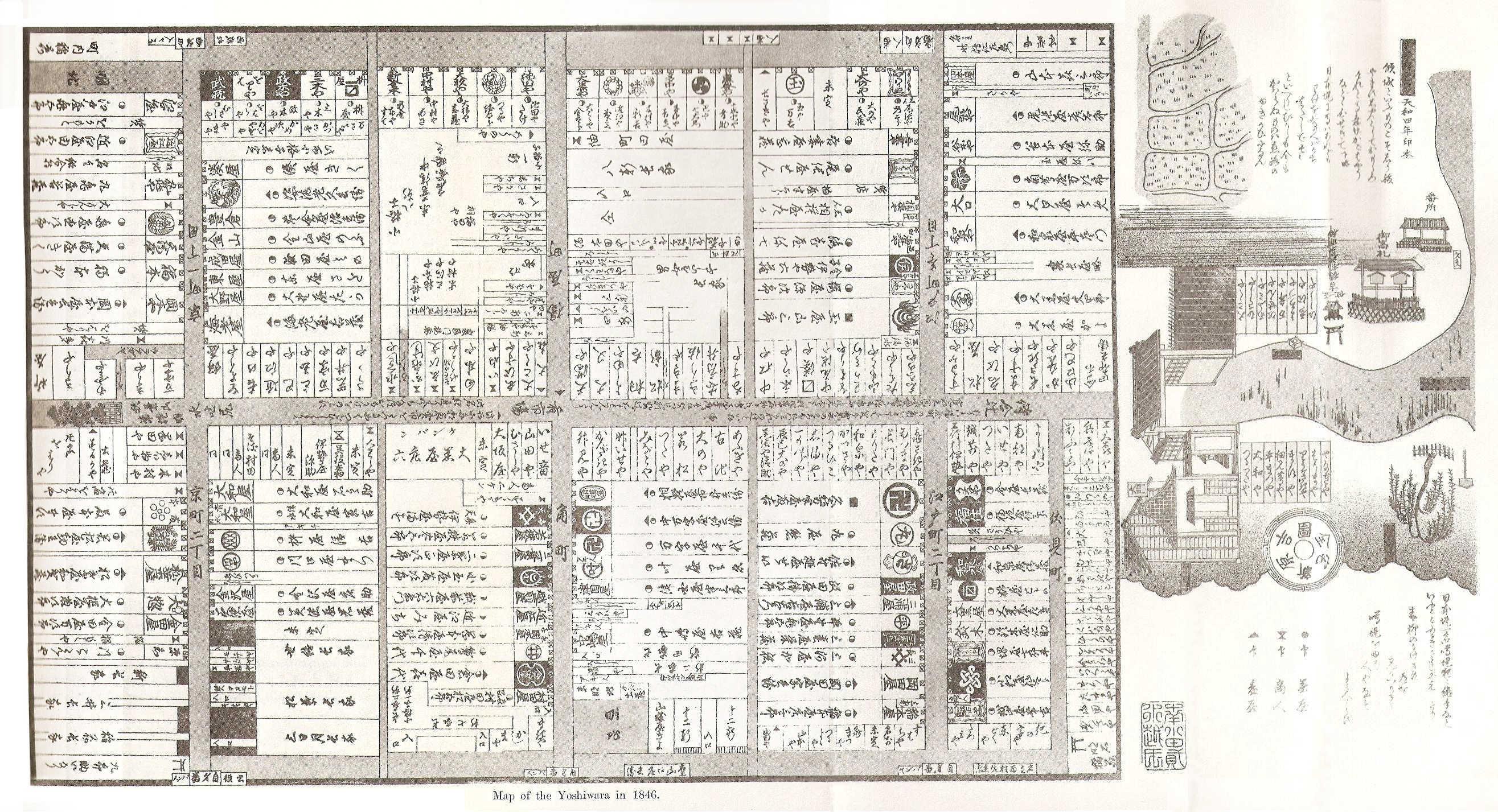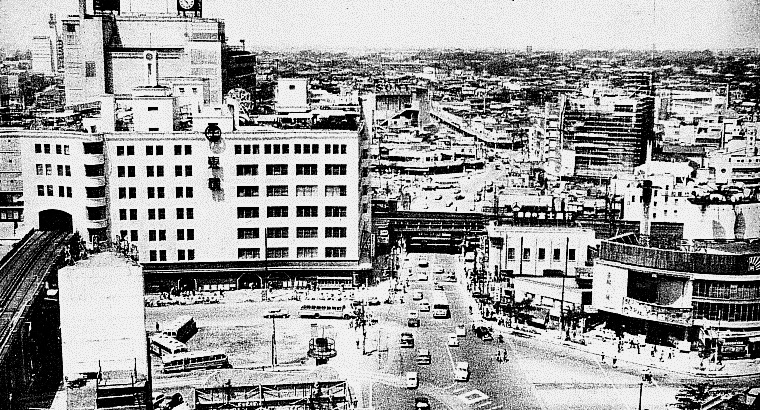|
London Boots Ichi-gō Ni-gō
London Boots Ichi-gō Ni-gō (ロンドンブーツ1号2号, meaning "London Boots #1 #2") are a Japanese comedy duo ( kombi) that originally performed manzai-style stand-up, but now are mainly known for their TV appearances and as hosts of a handful of off-the-wall variety shows. The two members are Atsushi Tamura (田村淳) and Ryō Tamura (田村亮), and though they have the same surname, there is no relation and they in fact come from very different backgrounds. Atsushi is from the Yamaguchi Prefecture, and speaks with the standard accent of someone from Tokyo. Ryō, on the other hand, is from Takatsuki, Osaka and speaks in a sometimes faltering Osaka dialect. Members * Atsushi Tamura (田村淳) Born December 4, 1973 in Hikoshima, Shimonoseki, Yamaguchi. Plays the '' boke''. The #2 of London Boots #1 #2, he is known for his style of talking out of context and leading others off-topic to create comedic effects. Atsushi appears more often as the talkative one of the d ... [...More Info...] [...Related Items...] OR: [Wikipedia] [Google] [Baidu] |
Yoshimoto Kogyo
is a major Japanese entertainment conglomerate. It was founded in 1912, Osaka, as a traditional theatre, and has since grown to be one of the most influential companies in Japan, employing most of Japan's popular owarai (comedy) talent, producing and promoting the shows they appear in. The two main headquarters are stationed in Osaka and Tokyo. Yoshimoto has been expanding its business in recent years, due to the ''warai'' boom. They now have their own comedy theme park in Otaru, Hokkaido and have begun signing the likes of musicians, producers, athletes and singers alongside business with the Japanese ''owarai'' industry. History 1912–1932: Establishment of Yoshimoto Kogyo-bu On April 1, 1912, Kichibei Yoshimoto and his wife Sei Yoshimoto purchased the Second Arts Building in Osaka. They later established Yoshimoto Kogyo-bu in January 1913 in Shinsaibashi. In 1922, they purchased two theatre establishments in January and May in Tokyo and Yokohama. 1932–2005: Rename to ... [...More Info...] [...Related Items...] OR: [Wikipedia] [Google] [Baidu] |
Takatsuki, Osaka
is a city in Osaka Prefecture, Japan. It is located in northern Osaka's Hokusetsu region. As of 2020, the city had an estimated population of 347,944 and a population density of 3,300 persons per km². The total area is 105.31 km². The city was founded on January 1, 1943, and is situated almost directly between Kyoto and Osaka. Owing to the convenience of being 13 and 15 minutes by train from these two cities respectively, the city prospered and has developed with increasing rapidity to become one of the biggest commuter towns in the area, serving both Kyoto and Osaka. Culturally, Takatsuki is renowned for its Imashirozuka Kofun (burial mound). Earthenware funerary objects (haniwa) discovered around this mound include figurines of warriors almost certainly placed with a protective purpose (The form of such a warrior was used as the design basis for the city's official mascot character, Hanitan). Takatsuki is also known for its Takatsuki Jazz Festival, held every year in ... [...More Info...] [...Related Items...] OR: [Wikipedia] [Google] [Baidu] |
Performing Groups Established In 1993
A performance is an act of staging or presenting a play, concert, or other form of entertainment. It is also defined as the action or process of carrying out or accomplishing an action, task, or function. Management science In the work place, job performance is the hypothesized conception or requirements of a role. There are two types of job performances: contextual and task. Task performance is dependent on cognitive ability, while contextual performance is dependent on personality. Task performance relates to behavioral roles that are recognized in job descriptions and remuneration systems. They are directly related to organizational performance, whereas contextual performances are value-based and add additional behavioral roles that are not recognized in job descriptions and covered by compensation; these are extra roles that are indirectly related to organizational performance. Citizenship performance, like contextual performance, relates to a set of individual activity/co ... [...More Info...] [...Related Items...] OR: [Wikipedia] [Google] [Baidu] |
Hyōjungo
is spoken natively by about 128 million people, primarily by Japanese people and primarily in Japan, the only country where it is the national language. Japanese belongs to the Japonic or Japanese- Ryukyuan language family. There have been many attempts to group the Japonic languages with other families such as the Ainu, Austroasiatic, Koreanic, and the now-discredited Altaic, but none of these proposals has gained widespread acceptance. Little is known of the language's prehistory, or when it first appeared in Japan. Chinese documents from the 3rd century AD recorded a few Japanese words, but substantial Old Japanese texts did not appear until the 8th century. From the Heian period (794–1185), there was a massive influx of Sino-Japanese vocabulary into the language, affecting the phonology of Early Middle Japanese. Late Middle Japanese (1185–1600) saw extensive grammatical changes and the first appearance of European loanwords. The basis of the standard dialect moved fr ... [...More Info...] [...Related Items...] OR: [Wikipedia] [Google] [Baidu] |
Kansai Dialect
The is a group of Japanese dialects in the Kansai region (Kinki region) of Japan. In Japanese, is the common name and it is called in technical terms. The dialects of Kyoto and Osaka are known as , and were particularly referred to as such in the Edo period. The Kansai dialect is typified by the speech of Osaka, the major city of Kansai, which is referred to specifically as . It is characterized as being both more melodic and harsher by speakers of the standard language.Omusubi: Japan's Regional Diversity retrieved January 23, 2007 Background Since Osaka is the largest city in the region and its speakers gained the most media exposure over the last century, non-Kansai-dialect speakers tend to associate the dialect of Osaka with the entire Kansai region. However, technically ...[...More Info...] [...Related Items...] OR: [Wikipedia] [Google] [Baidu] |
Fuuzoku
Prostitution in Japan has existed throughout the country's history. While the Prostitution Prevention Law of 1956 states that "No person may either do prostitution or become the customer of it", loopholes, liberal interpretations and a loose enforcement of the law have allowed the Japanese sex industry to prosper and earn an estimated 2.3 trillion yen ($24 billion) per year. Sex trade and sex services may be referred to as , which also means "manners", "customs" or "public morals". Since Japanese law defines prostitution as "intercourse with an unspecified person in exchange for payment", most services offer specifically non-coital services, such as conversation, dancing or bathing, sometimes accompanied by sexual acts that legally are not defined as "intercourse", in order to remain legal. History From the 15th century, Chinese, Koreans, and other East Asian visitors frequented brothels in Japan. This practice later continued among visitors from "the Western regions", m ... [...More Info...] [...Related Items...] OR: [Wikipedia] [Google] [Baidu] |
Penalty (Owarai)
Penalty or The Penalty may refer to: Sports * Penalty (golf) * Penalty (gridiron football) * Penalty (ice hockey) * Penalty (rugby) * Penalty (rugby union) * Penalty kick (association football) * Penalty shoot-out (association football) * Penalty (sports manufacturer) Entertainment * ''The Penalty'' (1920 film), an American crime film starring Lon Chaney * ''The Penalty'' (1941 film), an American crime film * ''Penalty'' (2019 film), an Indian sports film * ''The Penalty'' (novel), a 2006 sports novel for children by Mal Peet Other uses * Penalty (Mormonism), an oath made during the original Nauvoo Endowment ceremony of the Latter Day Saint movement * Penalty (contract), a type of contractual clause * Penalty Records, a record label * Sentence (law) In law, a sentence is the punishment for a crime ordered by a trial court after conviction in a criminal procedure, normally at the conclusion of a trial. A sentence may consist of imprisonment, a fine, or other sanctions ... [...More Info...] [...Related Items...] OR: [Wikipedia] [Google] [Baidu] |
Shibuya, Tokyo
Shibuya (渋谷 区 ''Shibuya-ku'') is a special ward in Tokyo, Japan. As a major commercial and finance center, it houses two of the busiest railway stations in the world, Shinjuku Station (southern half) and Shibuya Station. As of April 1, 2022, it has an estimated population of 228,906 and a population density of 15,149.30 people per km2 (39,263.4/sq mi). The total area is 15.11 km2 (5.83 sq mi). The name "Shibuya" is also used to refer to the shopping district which surrounds Shibuya Station. This area is known as one of the fashion centers of Japan, particularly for young people, and as a major nightlife area. History Heian to Edo period Shibuya was historically the site of a castle in which the Shibuya family resided from the 11th century through the Edo period. Following the opening of the Yamanote Line in 1885, Shibuya began to emerge as a railway terminal for southwestern Tokyo and eventually as a major commercial and entertainment center. Meiji to Showa period ... [...More Info...] [...Related Items...] OR: [Wikipedia] [Google] [Baidu] |
Manzai
is a traditional style of comedy in Japanese culture comparable to double act comedy or stand-up comedy. usually involves two performers ()—a straight man () and a double act, funny man ()—trading jokes at great speed. Most of the jokes revolve around mutual misunderstandings, double-talk, puns and other verbal gags. In recent times, has often been associated with the Osaka region, and comedians often speak in the Kansai dialect during their acts. In 1933, Yoshimoto Kogyo, a large entertainment conglomerate based in Osaka, introduced Osaka-style to Tokyo audiences, and coined the term "" (one of several ways of writing the word in Japanese; see below). In 2015, Matayoshi Naoki's manzai novel, , won the Akutagawa Prize. A mini-series adaptation was released on Netflix in 2016. History Originally based around a festival to welcome the Japanese New Year, New Year, traces its origins back to the Heian period. The two performers came with messages from the gods and t ... [...More Info...] [...Related Items...] OR: [Wikipedia] [Google] [Baidu] |
Shimonoseki
is a city located in Yamaguchi Prefecture, Japan. With a population of 265,684, it is the largest city in Yamaguchi Prefecture and the fifth-largest city in the Chūgoku region. It is located at the southwestern tip of Honshu facing the Tsushima Strait at the entrance to the Kanmon Straits (also known as the Straits of Shimonoseki) across from the city of Kitakyushu and the island of Kyushu. It is nicknamed the " Fugu Capital" for the locally caught pufferfish, and is the largest harvester of the pufferfish in Japan. History The geographical position of Shimonoseki has given it historical importance. The Heike and Genji fought at Dan-no-ura near the present Kanmon Bridge. In February 1691, German explorer Engelbert Kaempfer visited the town as part of his two-year stay in Japan, and described it as having around 400 to 500 houses, and as a major port in the region for supplying ship provisions. The Bombardment of Shimonoseki occurred in 1864, and the Treaty of Shimonoseki wa ... [...More Info...] [...Related Items...] OR: [Wikipedia] [Google] [Baidu] |






